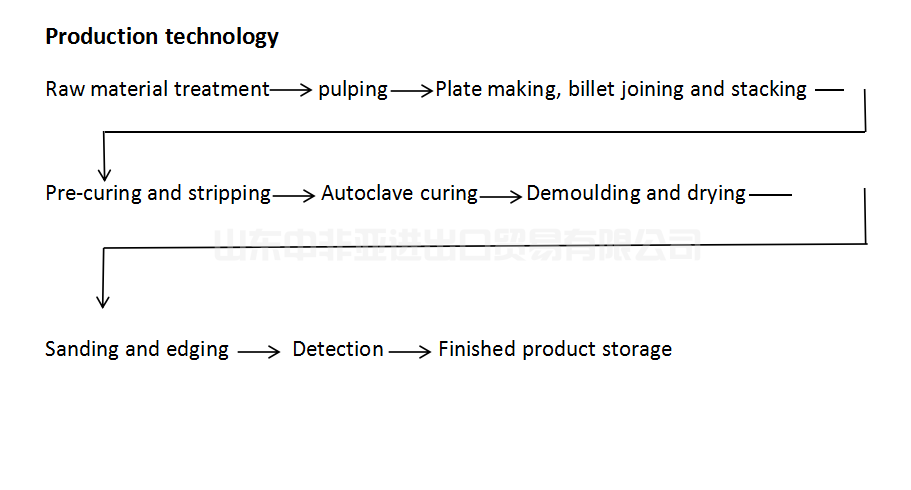
The production process of calcium silicate board includes the steps of raw material preparation, mixing, pouring, curing, cutting and processing, drying, packaging and warehousing. Each step requires precise control to ensure the quality and performance of the calcium silicate board. As a new type of building material, calcium silicate board has the characteristics of light weight, fire resistance, sound insulation, etc., and is widely used in construction projects. Through the scientific production process, high quality calcium silicate board can be produced to meet the needs of different projects. The specific process is as follows:
1. Preparation of raw materials: The main raw materials include wet grinding of quartz sand pulping, crushing and digestion of quicklime, grinding and beating of wood fiber.
2. Pulping process: In the countercurrent agitator, the wood fiber pulp that is sparsely ground to meet the beating requirements is successively added to slaked lime, cement, quartz powder, etc. A certain concentration of slurry is made after full mixing with a countercurrent mixer, and then pumped to the slurry storage tank, and then it is uniform with a single plate refiner, the premixed tank is stirred evenly, and there is a certain concentration and flow in the slurry plate making machine, and it is input.
3. Slurry board: The slurry uniformly flowing out of the slurry box is filtered by the running industrial blanket, and a thin layer is formed after dehydration and wrapped on the forming cylinder. After multi-layer winding to reach the set billet thickness, the control system automatically cuts the billet according to the design size of the billet. The molding machine adopts a die press with a diameter of 1600mm, and the blank is trimmed by transverse trimming to become 2 standard plates. The standard slab stacking machine is used, and the stacking method is 1 steel die and 1 plate.
4. Sheet compaction: the moulded slab is pressed by 7000t press for 30 minutes, so that the slab is dehydrated and compacted under 23.5MPa pressure, improving the strength and compactness of the sheet.
5. Pre-conditioning and demoulding: The wet plate is pre-cured in the pre-conditioning kiln until the billet reaches a certain strength after demoulding. The pre-culture temperature is 50~70℃, and the pre-culture period is 4-5 hours.
6. Autoclave curing: the billet is sent to autoclave for autoclave curing for 24 hours after demoulding, vapor pressure 1.2MPa, temperature 190℃. In this way, tobermolite and duranite are prepared and used to produce silica in billets during the steaming process. The hydration reaction quality directly affects the strength, scalability and moisture-proof performance of calcium silicate plate.
7. Cutting processing: After curing, calcium silicate board needs to be cut. According to the need, the plate can be divided into different sizes and specifications of the product. The cutting process can be carried out by hand cutting or mechanical equipment.
8. Drying: The calcium silicate board after cutting needs to be dried. The purpose of drying is to remove the residual moisture in the plate and improve the stability and strength of the calcium silicate plate. The method of drying can be natural air drying or using equipment such as ovens.
9. Packaging and storage: calcium silicate board after drying can be packaged and stored. The way of packaging is diversified, and the appropriate packaging materials and methods can be selected according to the needs. The packaged calcium silicate board can be stored in a warehouse for sale or transportation.
 简体中文
简体中文
